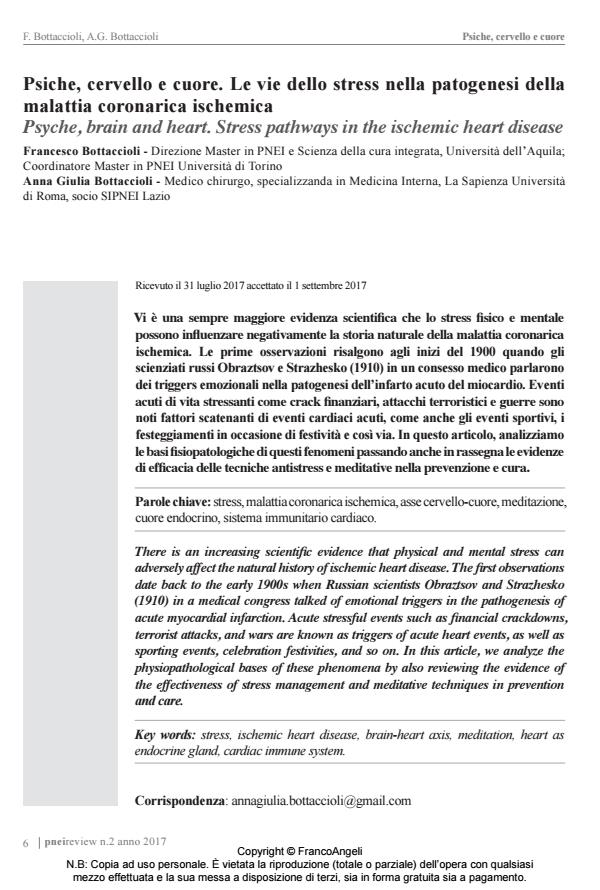Psiche, cervello e cuore. Le vie dello stress nella patogenesi della malattia coronarica ischemica
Titolo Rivista PNEI REVIEW
Autori/Curatori Francesco Bottaccioli, Anna Giulia Bottaccioli
Anno di pubblicazione 2017 Fascicolo 2017/2
Lingua Italiano Numero pagine 18 P. 6-23 Dimensione file 1243 KB
DOI 10.3280/PNEI2017-002002
Il DOI è il codice a barre della proprietà intellettuale: per saperne di più
clicca qui
Qui sotto puoi vedere in anteprima la prima pagina di questo articolo.
Se questo articolo ti interessa, lo puoi acquistare (e scaricare in formato pdf) seguendo le facili indicazioni per acquistare il download credit. Acquista Download Credits per scaricare questo Articolo in formato PDF

FrancoAngeli è membro della Publishers International Linking Association, Inc (PILA)associazione indipendente e non profit per facilitare (attraverso i servizi tecnologici implementati da CrossRef.org) l’accesso degli studiosi ai contenuti digitali nelle pubblicazioni professionali e scientifiche
Vi è una sempre maggiore evidenza scientifica che lo stress fisico e mentale possono influenzare negativamente la storia naturale della malattia coronarica ischemica. Le prime osservazioni risalgono agli inizi del 1900 quando gli scienziati russi Obraztsov e Strazhesko (1910) in un consesso medico parlarono dei triggers emozionali nella patogenesi dell’infarto acuto del miocardio. Eventi acuti di vita stressanti come crack finanziari, attacchi terroristici e guerre sono noti fattori scatenanti di eventi cardiaci acuti, come anche gli eventi sportivi, i festeggiamenti in occasione di festività e così via. In questo articolo, analizziamo le basi fi siopatologiche di questi fenomeni passando anche in rassegna le evidenze di efficacia delle tecniche antistress e meditative nella prevenzione e cura.
Parole chiave:Stress, malattia coronarica ischemica, asse cervello-cuore, meditazione, cuore endocrino, sistema immunitario cardiaco.
Francesco Bottaccioli, Anna Giulia Bottaccioli, Psiche, cervello e cuore. Le vie dello stress nella patogenesi della malattia coronarica ischemica in "PNEI REVIEW" 2/2017, pp 6-23, DOI: 10.3280/PNEI2017-002002